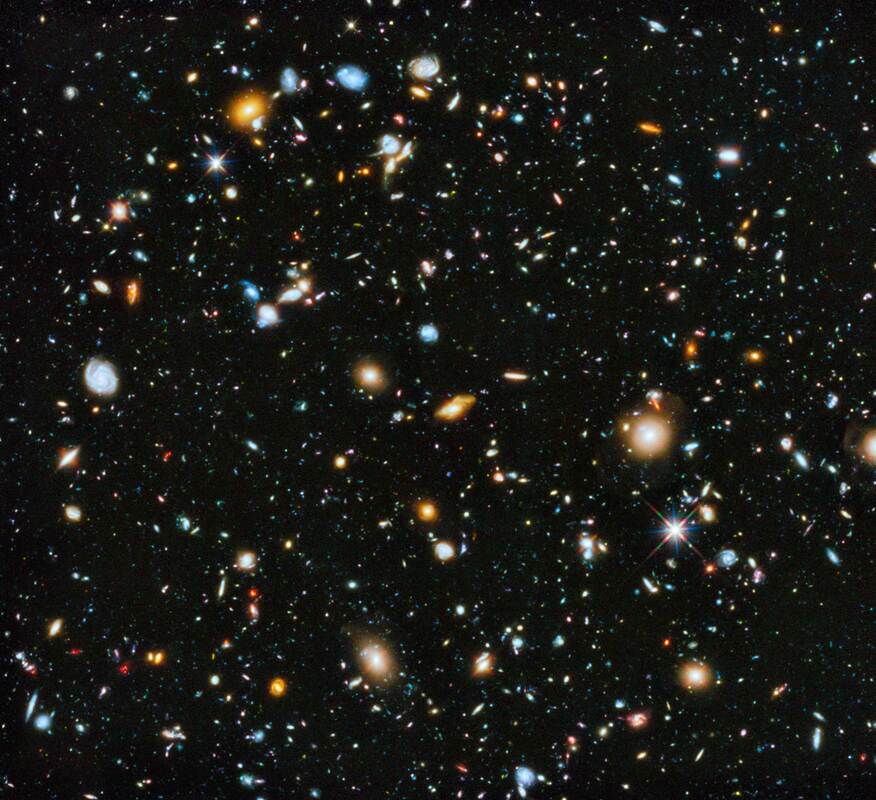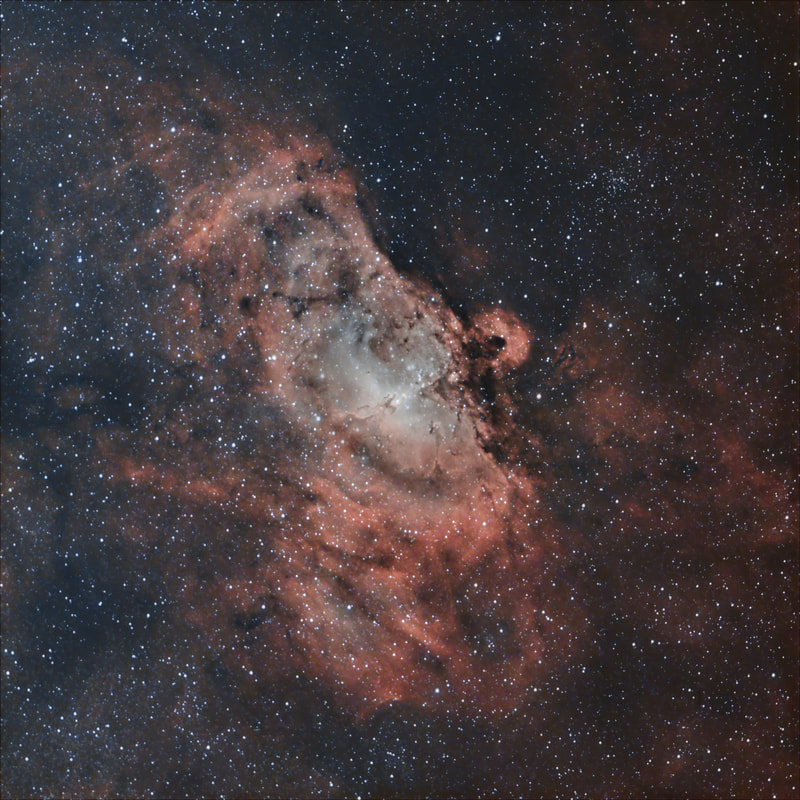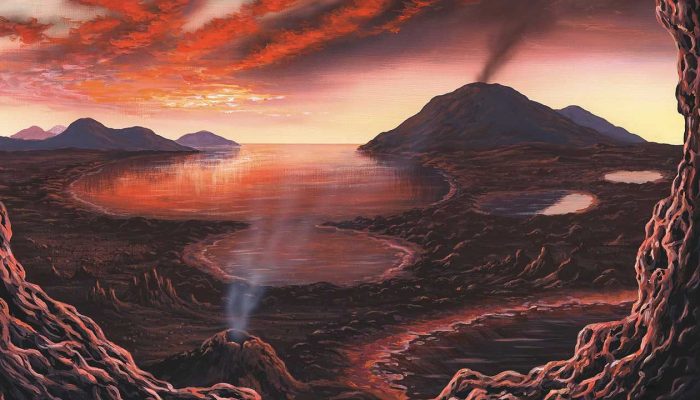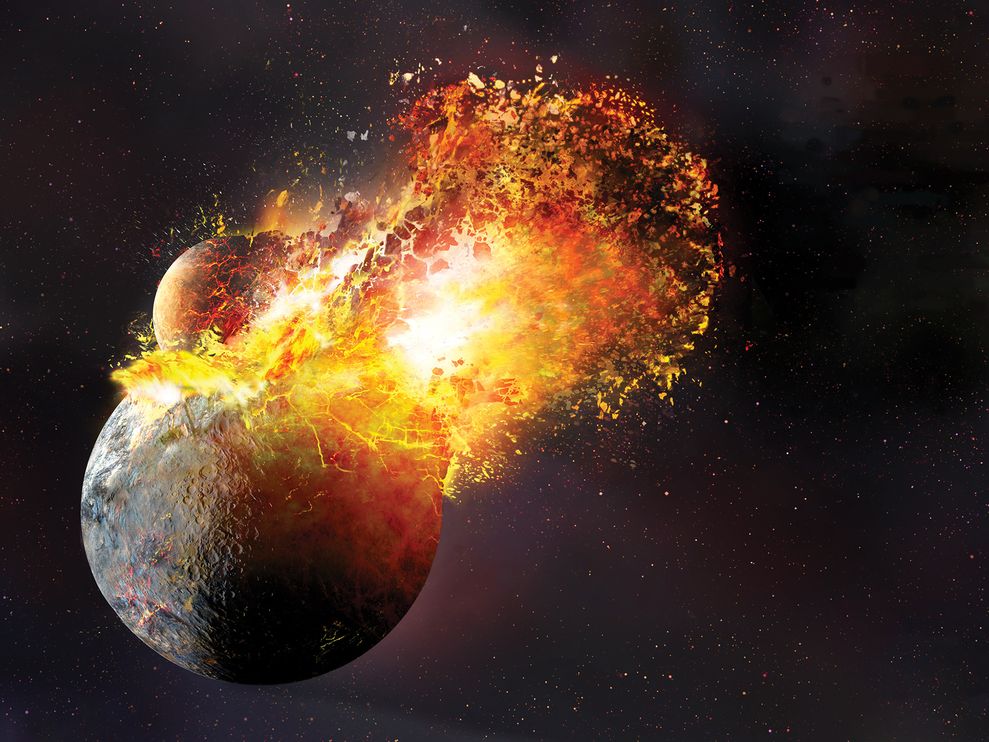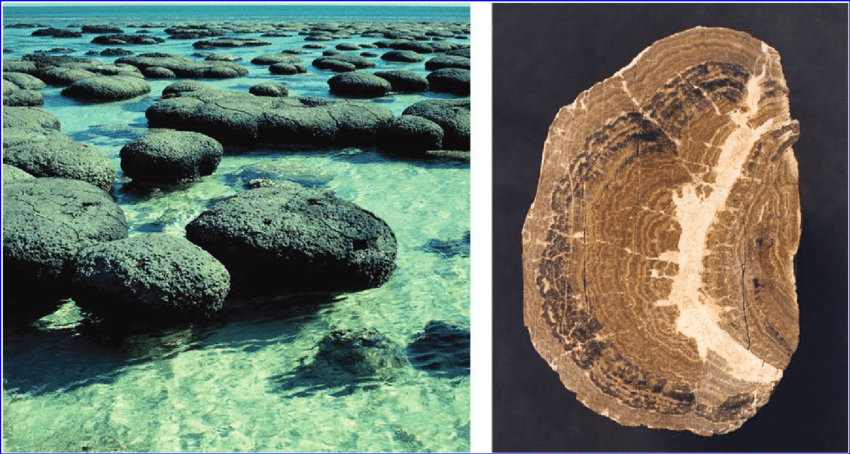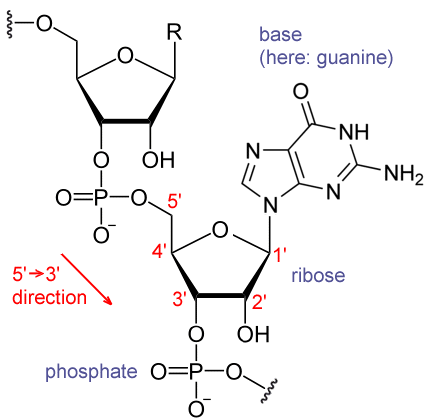Are We Alone?
|
One of the greatest and most asked questions in the last century. Are we alone? Is there life in our galaxy? In our universe? Surely we cannot be alone!
People’s faith and understanding that human life is a given on any planet are stretched and the best and most honest answer is – we do not know. Scientists, physicists and even me in the past have said there is surely life in the universe, we cannot be alone. The universe is just too big. A belief that there must be life brings in personal feelings about what people think or they will tell you what you want to hear, over what can be proven. So let us discuss the physics and biology on this matter leaving religion aside and see what comes out of it. Firstly let us look at the past, our past. How did we get here? |
How did the solar system come to be?
About 4.5 billion years ago, a dense cloud of interstellar gas and dust gave rise to our solar system. The supernova shockwave from a nearby exploding star may have caused the cloud to collapse. This dust cloud burst into a spinning disc of material known as a solar nebula when it disintegrated.
Gravity pulled more and more material toward the centre. At some point, the pressure inside the core became so intense that hydrogen atoms started to combine to produce helium, releasing a huge quantity of energy in the process. That was the birth of our Sun, which eventually accumulated more than 99% of the available matter. (Cyr et al., 1998; “The Origin of the Solar System,” 1960)
Additionally, the material further out in the disc was clumping. These groups collided with one another, growing bigger and bigger. Some of them became large enough to be shaped into spheres by gravity, creating planets, dwarf planets, and huge moons. In some instances, planets did not develop. For example, the asteroid belt is composed of fragments of the early solar system that were unable to fully coalesce into planets. Asteroids, comets, meteoroids, and small, atypical moons were created from smaller remaining fragments. (“The Origin of the Solar System,” 1960)
About 4.5 billion years ago, a dense cloud of interstellar gas and dust gave rise to our solar system. The supernova shockwave from a nearby exploding star may have caused the cloud to collapse. This dust cloud burst into a spinning disc of material known as a solar nebula when it disintegrated.
Gravity pulled more and more material toward the centre. At some point, the pressure inside the core became so intense that hydrogen atoms started to combine to produce helium, releasing a huge quantity of energy in the process. That was the birth of our Sun, which eventually accumulated more than 99% of the available matter. (Cyr et al., 1998; “The Origin of the Solar System,” 1960)
Additionally, the material further out in the disc was clumping. These groups collided with one another, growing bigger and bigger. Some of them became large enough to be shaped into spheres by gravity, creating planets, dwarf planets, and huge moons. In some instances, planets did not develop. For example, the asteroid belt is composed of fragments of the early solar system that were unable to fully coalesce into planets. Asteroids, comets, meteoroids, and small, atypical moons were created from smaller remaining fragments. (“The Origin of the Solar System,” 1960)
|
The primordial earth was formed and as time goes by, the planet compresses, which in turn heats up. To aid this, most of the material is radioactive which causes more heating of the planet which causes the planet to melt allowing heavy metals like Iron and Nickle to subside and create our core. (Davies, 2007)
As the metals sink, it rubs against the mantle which causes the planet to heat further and allows more Iron to sink. Eventually, this build-up of iron caused the young earth to develop the magnetic field around our planet, helping it deflect the sun’s radiation. The earth cooled and started to solidify creating the early earth. (Abe & Matsui, 1986). |
The Moon
Moons are not always considered with planet evolution, but our moon is gravitationally tied and affects our rotation (SPEDICATO & PETRUZZI, 2022) keeping it stable on its axis and giving us four seasons of weather (Laughs in the UK). This also affects our tidal systems along with the sun even though the moon is moving away from us at 3.78cm (37.8mm) every year (Rufu & Canup, 2020; Webb, 1982) it does pull on the oceans creating the tidal system we know today. eventually, the moon will be out of range to affect the tides and also stabilize the earth on its rotation causing erratic rotations.
The moon formed about 60-175 million years after the creation of the solar system. A rogue planet named Theia orbited within our Lagrange points (notably L4) and collided with the early earth which destroyed Theia and eventually created our moon (Asphaug et al., 2021) (this is the most commonly accepted thesis on the moon, given how close it is to us and the fact it is moving away from us).
The most common thought is what if the moon was never there or was removed (hypothetical scenario). The first one would depend if the planet hit us in the first place since the Earth isn't a perfect circle and bulges at the equator due to the gravitation forces from the moon and sun, meaning more water at the equator and less at the poles. Some research suggests life wouldn't have evolved without the moon to act as an anchor on our planet keeping the cycle in check (No Moon, No Life on Earth, Suggests Theory | New Scientist, 2004.)
On the other side of this, if the moon suddenly disappeared, it's thought humans would still survive (being the intelligent humans we are) and adapt to the conditions from the sudden removal of the moon. There would no doubt be mass loss of life, panic, mayhem and people going back to our primitive side of survival, but we would be able to survive and live through it. The seasons would change, the tides would change due to only the sun gravitationally pulling on the Earth (which is not as strong as the moon's pull) and the nights would be darker (especially in locations with no electricity and street lights) due to no moon to reflect light from the sun.
Moons are not always considered with planet evolution, but our moon is gravitationally tied and affects our rotation (SPEDICATO & PETRUZZI, 2022) keeping it stable on its axis and giving us four seasons of weather (Laughs in the UK). This also affects our tidal systems along with the sun even though the moon is moving away from us at 3.78cm (37.8mm) every year (Rufu & Canup, 2020; Webb, 1982) it does pull on the oceans creating the tidal system we know today. eventually, the moon will be out of range to affect the tides and also stabilize the earth on its rotation causing erratic rotations.
The moon formed about 60-175 million years after the creation of the solar system. A rogue planet named Theia orbited within our Lagrange points (notably L4) and collided with the early earth which destroyed Theia and eventually created our moon (Asphaug et al., 2021) (this is the most commonly accepted thesis on the moon, given how close it is to us and the fact it is moving away from us).
The most common thought is what if the moon was never there or was removed (hypothetical scenario). The first one would depend if the planet hit us in the first place since the Earth isn't a perfect circle and bulges at the equator due to the gravitation forces from the moon and sun, meaning more water at the equator and less at the poles. Some research suggests life wouldn't have evolved without the moon to act as an anchor on our planet keeping the cycle in check (No Moon, No Life on Earth, Suggests Theory | New Scientist, 2004.)
On the other side of this, if the moon suddenly disappeared, it's thought humans would still survive (being the intelligent humans we are) and adapt to the conditions from the sudden removal of the moon. There would no doubt be mass loss of life, panic, mayhem and people going back to our primitive side of survival, but we would be able to survive and live through it. The seasons would change, the tides would change due to only the sun gravitationally pulling on the Earth (which is not as strong as the moon's pull) and the nights would be darker (especially in locations with no electricity and street lights) due to no moon to reflect light from the sun.
|
The start of life
Life and the earliest forms of it started around 3.7 billion years ago. These were found by carbon dating the rock in which they were found. The earth was peppered with meteors after its creation, bringing with it water and organic molecules. These formed into amino acids which are formed in the waters and are found to be carbon12 rich. These eventually form into proteins, protocells, and Ribonucleic Acid (RNA) these primitive molecules are the origins of life. (Lal, 2008) Stromatolites were produced when microbe-made sticky mats catch and organise sediments into layers. Even as the microorganisms perish, minerals precipitate inside the layers, forming sturdy structures. |
|
Then there was… Oxygen
At least 2.4 billion years ago, cyanobacteria underwent a spectacular change that was made possible by their evolution. They evolved into the earliest photo-synthesizers on Earth, producing food out of the water and solar energy while also releasing oxygen in the process. Other microorganisms that could not withstand oxygen found the environment to be less favourable as a result of the abrupt, significant spike in oxygen. (Thomas et al., 2005) Changes in the rocks on the seafloor provide a record of this Great Oxidation Event. When oxygen is present, iron undergoes a chemical reaction (oxidation) with it and is expelled from the body. Iron bands can be seen striped over rocks that predate the catastrophe. Iron bands are absent from rocks that were formed after the event, indicating the presence of oxygen at the time. Following the initial pulse of oxygen, it steadied at lower concentrations, where it would stay for a few billion years longer. The decomposition of cyanobacteria's bodies as they died and moved through the ocean likely decreased oxygen levels. Therefore, the ocean was still an unsuitable habitat for the majority of living forms that require plenty of oxygen. |
Multicellular Life has begun
Other innovations were taking place. Microbes can process a wide variety of substances, but they lack the specialised cells required for complex bodies. Animal bodies comprise a variety of cells, including skin, blood, and bone, each of which contains organelles that perform a specific function. Microbes are merely single cells devoid of organelles and Deoxyribonucleic Acid (DNA)-packaging nuclei.
When germs started living within other microbes and acting as their organelles, something extraordinary happened. These cooperative partnerships gave rise to mitochondria, the organelles that convert food into energy. Additionally, DNA was first packaged in nuclei. The newly developed complex cells, known as "eukaryotic cells," featured specialised components that supported the overall function of the cell. (Waldrop, 1989)
Additionally, cells started cohabitating, perhaps because there were advantages to doing so. Depending on their size, groups of cells may be able to feed more effectively or acquire protection. As they coexisted, cells started to assist one another's requirements by performing individual tasks. While some cells were responsible for creating the connections that kept the group together, other cells produced the digestive enzymes needed to break down food. (Senior, 2000)
Other innovations were taking place. Microbes can process a wide variety of substances, but they lack the specialised cells required for complex bodies. Animal bodies comprise a variety of cells, including skin, blood, and bone, each of which contains organelles that perform a specific function. Microbes are merely single cells devoid of organelles and Deoxyribonucleic Acid (DNA)-packaging nuclei.
When germs started living within other microbes and acting as their organelles, something extraordinary happened. These cooperative partnerships gave rise to mitochondria, the organelles that convert food into energy. Additionally, DNA was first packaged in nuclei. The newly developed complex cells, known as "eukaryotic cells," featured specialised components that supported the overall function of the cell. (Waldrop, 1989)
Additionally, cells started cohabitating, perhaps because there were advantages to doing so. Depending on their size, groups of cells may be able to feed more effectively or acquire protection. As they coexisted, cells started to assist one another's requirements by performing individual tasks. While some cells were responsible for creating the connections that kept the group together, other cells produced the digestive enzymes needed to break down food. (Senior, 2000)
The Drake Equation
The Drake equation, formulated by Frank Drake in the 1960s (1961) and is a probabilistic argument which is used to estimate the probability of intelligent life which is communitive within the Milky Way.
The equation is composed of several terms that, when put together, allow for an informed discussion on the possibility of encountering an extra-terrestrial intelligence. Even while it has a mathematical structure (several elements are multiplied together to get an overall probability), it is better understood as a formula in a less formal sense.
The equation
The Drake equation, formulated by Frank Drake in the 1960s (1961) and is a probabilistic argument which is used to estimate the probability of intelligent life which is communitive within the Milky Way.
The equation is composed of several terms that, when put together, allow for an informed discussion on the possibility of encountering an extra-terrestrial intelligence. Even while it has a mathematical structure (several elements are multiplied together to get an overall probability), it is better understood as a formula in a less formal sense.
The equation
N = The number of civilisations in our galaxy which have possible means of communication
R∗ = The star formation rate in our galaxy on average
fp = the number of stars which have planets as a fraction/ percentage
no = The number of planets which potentially can hold life from the stars which have planets
fl = The percentage of these planets developing life as a fraction
fi = The percentage of these planets’ life evolves into intelligent life as a fraction
FC = How many civilizations have the technology to send out signals into space that can be detected
L = The amount of time that these civilizations send out signals that can be detected
Carl Sagan uses this equation in his series of Cosmos using estimations and, at the time, current knowledge (some of which is still current today) giving a result of N~ 10 civilisations in our galaxy which can communicate. He also made other assumptions which then changed the result to millions of civilisations which were under the assumption these civilisations never destroyed themselves with their technology.
Prof. David Kipping goes into detail on the equation on his YouTube channel (recommended watch) stating even today we only know two of the seven parts of this equation. The first is the formation rate which is two per year and the second is 1 (in other words planets are a by-product of star formation) (Meyer et al., 2008). After these first two terms the rest are unknown and are subject to guess and estimation and here lies the issue.
The third term which is several planets that can hold life from the sun and can sustain planets will be planets in what is known as the Goldilocks zone. A zone around the sun in which liquid water can exist. This zone varies depending on the star it is around but can easily be calculated using current technology up till now the make-up of the planets is generally unknown, meaning they could be Earth planets, or they could be Venus’s type of planet and even maybe hot Jupiter’s (planets which formed further away from the star but migrated in closer to the star). But we can make an educated guess on the number of planets which can hold life, given certain circumstances or conditions are met, we can then use these as a conservative guess. (If the world of science can agree on a number that is..)
The recent launch of the James Webb Space Telescope (JWST) gave rise to hope in the study of other planets that could help discover planetary bodies around other stars and their atmospheric makeup. A recent paper proposed the JWST will be able to detect CH4 and CO2. (Mikal-Evans, 2021) and recently (In July 2022) NASA confirmed the detection of Carbon Dioxide in an exoplanet atmosphere (Adkins, 2022).
Even with the recent events, the likelihood of getting a realistic number of high certainties for planets holding life is far from becoming a reality. So many elements to this which affect if the planet can hold life will likely make this an educated guess for some time.
The rest of the equation, again, is complete guesswork. We only have one workable data set, which is us on Earth, which is not a data set (we need more data from other locations in the universe). Visiting the planets throughout the solar system to find life (even at a bacterial level) will be of some significance as this will show biological life can survive on other planets in extreme conditions. But until we visit these locations, we will only ever have one data set on life on other planets: the ones on Earth.
R∗ = The star formation rate in our galaxy on average
fp = the number of stars which have planets as a fraction/ percentage
no = The number of planets which potentially can hold life from the stars which have planets
fl = The percentage of these planets developing life as a fraction
fi = The percentage of these planets’ life evolves into intelligent life as a fraction
FC = How many civilizations have the technology to send out signals into space that can be detected
L = The amount of time that these civilizations send out signals that can be detected
Carl Sagan uses this equation in his series of Cosmos using estimations and, at the time, current knowledge (some of which is still current today) giving a result of N~ 10 civilisations in our galaxy which can communicate. He also made other assumptions which then changed the result to millions of civilisations which were under the assumption these civilisations never destroyed themselves with their technology.
Prof. David Kipping goes into detail on the equation on his YouTube channel (recommended watch) stating even today we only know two of the seven parts of this equation. The first is the formation rate which is two per year and the second is 1 (in other words planets are a by-product of star formation) (Meyer et al., 2008). After these first two terms the rest are unknown and are subject to guess and estimation and here lies the issue.
The third term which is several planets that can hold life from the sun and can sustain planets will be planets in what is known as the Goldilocks zone. A zone around the sun in which liquid water can exist. This zone varies depending on the star it is around but can easily be calculated using current technology up till now the make-up of the planets is generally unknown, meaning they could be Earth planets, or they could be Venus’s type of planet and even maybe hot Jupiter’s (planets which formed further away from the star but migrated in closer to the star). But we can make an educated guess on the number of planets which can hold life, given certain circumstances or conditions are met, we can then use these as a conservative guess. (If the world of science can agree on a number that is..)
The recent launch of the James Webb Space Telescope (JWST) gave rise to hope in the study of other planets that could help discover planetary bodies around other stars and their atmospheric makeup. A recent paper proposed the JWST will be able to detect CH4 and CO2. (Mikal-Evans, 2021) and recently (In July 2022) NASA confirmed the detection of Carbon Dioxide in an exoplanet atmosphere (Adkins, 2022).
Even with the recent events, the likelihood of getting a realistic number of high certainties for planets holding life is far from becoming a reality. So many elements to this which affect if the planet can hold life will likely make this an educated guess for some time.
The rest of the equation, again, is complete guesswork. We only have one workable data set, which is us on Earth, which is not a data set (we need more data from other locations in the universe). Visiting the planets throughout the solar system to find life (even at a bacterial level) will be of some significance as this will show biological life can survive on other planets in extreme conditions. But until we visit these locations, we will only ever have one data set on life on other planets: the ones on Earth.
But are we alone?
The fact we cannot prove we are or are not alone in this universe does not necessarily mean we are or are not alone. The simple fact is we do not know! This is not a terrible thing; it is the honest answer. Stating we are not alone in a scientific context would require proof and we do not have proof. We have probability, uncertainty and guesses with best and worst-case examples.
We can safely rule out first and second-generation stars which die out far too fast for life to develop to advanced levels to be able to escape the sun’s destruction or means of transmission of signals. Essentially First and second-generation stars only last at most tens of millions of years rather than billions of years which is needed, from Earth’s perspective, for life to develop into an advanced civilisation. (Charbonnel et al., 2014)
Even though life on Earth started shortly after the Earth settled it is still in the region of 3.7 billion years ago, which is about eight hundred million years after the planet formed. Even then this was basic life, multicellular life did not start till after 1.5 - 2 billion years ago (“Ancient Origins of Multicellular Life,” 2016) and advanced civilisation (Humans) was only a few hundred thousand years ago (Galway-Witham & Stringer, 2018). This period compared with the first and second-generation stars show that these generation stars' life span was too short for any life to start on the planet around the star in question. Third-generation stars like ours will be the first-generation stars which could potentially hold life and last long enough to sustain life to advanced stages to allow advanced technology. But the question is – do they exist or are we the first?
The fact we cannot prove we are or are not alone in this universe does not necessarily mean we are or are not alone. The simple fact is we do not know! This is not a terrible thing; it is the honest answer. Stating we are not alone in a scientific context would require proof and we do not have proof. We have probability, uncertainty and guesses with best and worst-case examples.
We can safely rule out first and second-generation stars which die out far too fast for life to develop to advanced levels to be able to escape the sun’s destruction or means of transmission of signals. Essentially First and second-generation stars only last at most tens of millions of years rather than billions of years which is needed, from Earth’s perspective, for life to develop into an advanced civilisation. (Charbonnel et al., 2014)
Even though life on Earth started shortly after the Earth settled it is still in the region of 3.7 billion years ago, which is about eight hundred million years after the planet formed. Even then this was basic life, multicellular life did not start till after 1.5 - 2 billion years ago (“Ancient Origins of Multicellular Life,” 2016) and advanced civilisation (Humans) was only a few hundred thousand years ago (Galway-Witham & Stringer, 2018). This period compared with the first and second-generation stars show that these generation stars' life span was too short for any life to start on the planet around the star in question. Third-generation stars like ours will be the first-generation stars which could potentially hold life and last long enough to sustain life to advanced stages to allow advanced technology. But the question is – do they exist or are we the first?
Considerations
Considering the universe is 13.6 billion years old and our sun is roughly five billion years old. While the sun is classed as middle-aged (Yet still in its main sequence stages) the age of the universe is considered to be in its infancy. (Page & Mitchell, 2005). The universe will last about ten to the power of 60 years (which is one followed by sixty zeros. To put it in perspective one trillion is twelve zeros. And One million is six zeros.)
The common molecules in the universe are Amino acids, Benzine and sugars which are found in comets and molecular clouds throughout the universe (Davankov, 2018) these compounds need to come together in the right way at the right time to start evolution. (Hanson et al., 1998)
In the early 1950s, an experiment took place (and many more since then) involving Water, Methane, Ammonia and Hydrogen. These were gently heated and electrical sparks were introduced to mimic early Earth. The outcome was many molecules, including Amino Acids, but no complex proteins and no DNA (Engagedscholarship@csu & Ball, 2020.) – in a counterargument to this, it was potentially not run long enough for anything to happen, but how long would be needed if that were the case?
Unlike the Abiogenesis experiment above, the earth had all the right conditions which had all the chemical reactions at the right times. (Hanson et al., 1998) Even though the early earth had the right conditions early on in its life, could this be considered for other planets? A lot of people feel that life is common in the universe which would be classed as faith rather than believing when there is sufficient evidence of life in the universe. Carl Sagan once said “What is faith? Faith is the belief in the absence of evidence. Now I don't propose to tell people what to believe, but for me believing when there is no compelling evidence is a mistake. The idea is to withhold belief until there is compelling evidence”
Believing there is life in the universe is wrong without knowledge which we can prove if there is life. The evidence of life shows both sides with life potentially being everywhere in the universe, but it is also at the same time supporting evidence of us being alone in the universe. (Bergman, 2000) and what drives people is blinding faith that there must be life elsewhere.
So it concludes potentially one of the following
Considering the universe is 13.6 billion years old and our sun is roughly five billion years old. While the sun is classed as middle-aged (Yet still in its main sequence stages) the age of the universe is considered to be in its infancy. (Page & Mitchell, 2005). The universe will last about ten to the power of 60 years (which is one followed by sixty zeros. To put it in perspective one trillion is twelve zeros. And One million is six zeros.)
The common molecules in the universe are Amino acids, Benzine and sugars which are found in comets and molecular clouds throughout the universe (Davankov, 2018) these compounds need to come together in the right way at the right time to start evolution. (Hanson et al., 1998)
In the early 1950s, an experiment took place (and many more since then) involving Water, Methane, Ammonia and Hydrogen. These were gently heated and electrical sparks were introduced to mimic early Earth. The outcome was many molecules, including Amino Acids, but no complex proteins and no DNA (Engagedscholarship@csu & Ball, 2020.) – in a counterargument to this, it was potentially not run long enough for anything to happen, but how long would be needed if that were the case?
Unlike the Abiogenesis experiment above, the earth had all the right conditions which had all the chemical reactions at the right times. (Hanson et al., 1998) Even though the early earth had the right conditions early on in its life, could this be considered for other planets? A lot of people feel that life is common in the universe which would be classed as faith rather than believing when there is sufficient evidence of life in the universe. Carl Sagan once said “What is faith? Faith is the belief in the absence of evidence. Now I don't propose to tell people what to believe, but for me believing when there is no compelling evidence is a mistake. The idea is to withhold belief until there is compelling evidence”
Believing there is life in the universe is wrong without knowledge which we can prove if there is life. The evidence of life shows both sides with life potentially being everywhere in the universe, but it is also at the same time supporting evidence of us being alone in the universe. (Bergman, 2000) and what drives people is blinding faith that there must be life elsewhere.
So it concludes potentially one of the following
- We are alone in the universe/ or are the first advanced civilisation in the universe
- Basic life and advanced civilisations are common in the universe
- Life is common but minimal advanced civilisations
- Minimal life and next to no advanced civilisations
Conclusion
So to conclude.
We have been sending signals into space via our FM signal, reaching about 60-70 light years away from us. If they can decipher it from the background noise then potential life knows we are here but does not necessarily have the technology to send a signal back or have sent signals that we have not received or cannot decode from the background noise. Either that or there is no advanced civilisation there to pick the signal up. Maybe it is primitive life and, like us in the older times, or more primitive times, the thought of other life was not thought about.
Primitive life on Earth believed the sky would fall down if it was damaged. Tribes believed the sky was held up by the spiral arm known as the backbone of the sky (or night). Kung Bushmen of the Kalahari Desert in Botswana were one of these tribes. Such beliefs and folklore would be passed down generations without the advancement of technology and their belief would remain the same because of the lack of advancement. (THE BACKBONE OF NIGHT - Cosmos - Carl Sagan). such tribes still exist today, some of which are aggressive (or defensive, depending on how you look at it) to people trying to visit the island. Sentinelese islanders are such tribes where evolution created humans but no desire for advancement with technology and set in their ways. Such tribes would never be able to distinguish between such technology and other forms of communication and would most likely consider it a threat to their way of life over anything else (Sasikumar, 2018).
The earth only has about another 700-900million years of inhabitable time left (Kopparapu et al., 2013) although other papers speculate 900-1.5 billion years, which is a substantial difference. (Wolf & Toon, 2014) either way, it is not 4.5 - 5 billion years which is roughly when our sun will end its main sequence phase (Guenther, 1989)
if we developed so late in Earth's habitable life, we could make certain assumptions, based on our current understanding, that life isn’t so easy to start, let alone the evolution of advanced life. Even in the Drake equation, the last variable is the life expectancy of advanced life to broadcast, which could be taken as advanced civilisations will potentially kill themselves off, or stop broadcasting altogether for various reasons. If life started later than we did, there is a chance they won't have time to evolve. too early and potentially they may not be around anymore. this is assuming advanced civilisation evolved at all.
So to answer the question – are we alone? The best and the only truthful answer is we do not know. This is the only answer we can give to this type of question given we only have one example of life - us.
Personal thoughts have been left out of this to try and give unbiased reasoning. But what are my thoughts? There are planets which can harbour life (especially with JWST’s recent discoveries) but is life actually on these planets? Maybe. I will not just run and believe in something which lacks evidence. Basic life is more a possibility than advanced life, but I do not assume this. I still think we are alone till we are not. Everyone wants life to exist in the universe (including me), but as stated earlier unless there is proof, my belief in life on other planets is not 100% or agreed on.
Another way to look at it is this: It does not matter if life is in the universe or not, for it will be so far away it will not make a difference. Think about being alone on an island for the rest of your life. You cannot escape, people do not know you are there, but you know they are there. You still are alone, even if people are just out of reach, you are still alone. If life is out there we will never reach it or be able to make contact with them directly. The only way this will change is if there is life in the solar system which we can visit increasing the values on the Drake equation and giving insights to other worlds in which life can live apart from Earth.
Life is unique, we are unique, and we should cherish what we have now and try to look after our future.
So to conclude.
We have been sending signals into space via our FM signal, reaching about 60-70 light years away from us. If they can decipher it from the background noise then potential life knows we are here but does not necessarily have the technology to send a signal back or have sent signals that we have not received or cannot decode from the background noise. Either that or there is no advanced civilisation there to pick the signal up. Maybe it is primitive life and, like us in the older times, or more primitive times, the thought of other life was not thought about.
Primitive life on Earth believed the sky would fall down if it was damaged. Tribes believed the sky was held up by the spiral arm known as the backbone of the sky (or night). Kung Bushmen of the Kalahari Desert in Botswana were one of these tribes. Such beliefs and folklore would be passed down generations without the advancement of technology and their belief would remain the same because of the lack of advancement. (THE BACKBONE OF NIGHT - Cosmos - Carl Sagan). such tribes still exist today, some of which are aggressive (or defensive, depending on how you look at it) to people trying to visit the island. Sentinelese islanders are such tribes where evolution created humans but no desire for advancement with technology and set in their ways. Such tribes would never be able to distinguish between such technology and other forms of communication and would most likely consider it a threat to their way of life over anything else (Sasikumar, 2018).
The earth only has about another 700-900million years of inhabitable time left (Kopparapu et al., 2013) although other papers speculate 900-1.5 billion years, which is a substantial difference. (Wolf & Toon, 2014) either way, it is not 4.5 - 5 billion years which is roughly when our sun will end its main sequence phase (Guenther, 1989)
if we developed so late in Earth's habitable life, we could make certain assumptions, based on our current understanding, that life isn’t so easy to start, let alone the evolution of advanced life. Even in the Drake equation, the last variable is the life expectancy of advanced life to broadcast, which could be taken as advanced civilisations will potentially kill themselves off, or stop broadcasting altogether for various reasons. If life started later than we did, there is a chance they won't have time to evolve. too early and potentially they may not be around anymore. this is assuming advanced civilisation evolved at all.
So to answer the question – are we alone? The best and the only truthful answer is we do not know. This is the only answer we can give to this type of question given we only have one example of life - us.
Personal thoughts have been left out of this to try and give unbiased reasoning. But what are my thoughts? There are planets which can harbour life (especially with JWST’s recent discoveries) but is life actually on these planets? Maybe. I will not just run and believe in something which lacks evidence. Basic life is more a possibility than advanced life, but I do not assume this. I still think we are alone till we are not. Everyone wants life to exist in the universe (including me), but as stated earlier unless there is proof, my belief in life on other planets is not 100% or agreed on.
Another way to look at it is this: It does not matter if life is in the universe or not, for it will be so far away it will not make a difference. Think about being alone on an island for the rest of your life. You cannot escape, people do not know you are there, but you know they are there. You still are alone, even if people are just out of reach, you are still alone. If life is out there we will never reach it or be able to make contact with them directly. The only way this will change is if there is life in the solar system which we can visit increasing the values on the Drake equation and giving insights to other worlds in which life can live apart from Earth.
Life is unique, we are unique, and we should cherish what we have now and try to look after our future.
References
- Abe, Y., & Matsui, T. (1986). Early evolution of the Earth: Accretion, atmosphere formation, and thermal history. Journal of Geophysical Research: Solid Earth, 91(B13), E291–E302. https://doi.org/10.1029/JB091IB13P0E291
- Adkins, J. (2022). NASA’s Webb Detects Carbon Dioxide in Exoplanet Atmosphere. http://www.nasa.gov/feature/goddard/2022/nasa-s-webb-detects-carbon-dioxide-in-exoplanet-atmosphere
- Ancient origins of multicellular life. (2016). Nature 2016 533:7604, 533(7604), 441–441. https://doi.org/10.1038/533441b
- Asphaug, E., Emsenhuber, A., Cambioni, S., Gabriel, T. S. J., & Schwartz, S. R. (2021). Collision Chains among the Terrestrial Planets. III. Formation of the Moon. The Planetary Science Journal, 2(5), 200. https://doi.org/10.3847/PSJ/AC19B2
- Bergman, J. (2000). Why Abiogenesis Is Impossible. 36(4).
- Charbonnel, C., Chantereau, W., Krause, M., Primas, F., & Wang, Y. (2014). Are there any first-generation stars in globular clusters today? Astronomy & Astrophysics, 569, L6. https://doi.org/10.1051/0004-6361/201424804
- Cyr, K. E., Sears, W. D., & Lunine, J. I. (1998). Distribution and Evolution of Water Ice in the Solar Nebula: Implications for Solar System Body Formation. Icarus, 135(2), 537–548. https://doi.org/10.1006/ICAR.1998.5959
- Davankov, V. A. (2018). Biological Homochirality on the Earth, or in the Universe? A Selective Review. Symmetry 2018, Vol. 10, Page 749, 10(12), 749. https://doi.org/10.3390/SYM10120749
- Davies, G. F. (2007). Thermal Evolution of the Mantle. Treatise on Geophysics, 9, 197–216. https://doi.org/10.1016/B978-044452748-6.00145-0
- Engagedscholarship@csu, E., & Ball, D. W. (2020.). New RNA Research Demonstrates Prebiotic Possibility. Retrieved September 5, 2022, from https://skepticalinquirer.org/2020/01/new-rna-research-demonstrates-
- Galway-Witham, J., & Stringer, C. (2018). How did Homo sapiens evolve? Science, 360(6395), 1296–1298. https://doi.org/10.1126/SCIENCE.AAT6659
- Guenther, D. B. (1989). AGE OF THE SUN. The Astrophysical Journal, 339, 1156–1159.
- Hanson, R., Carter, B., Dominitz, J., Grether, D., Jackson, P., Ledyard, J., Leslie, J., Porter, D., & Sherman, R. (1998). Must Early Life Be Easy? The Rhythm of Major Evolutionary Transitions. http://hanson.gmu.edu
- Kopparapu, R. K., Ramirez, R., Kasting, J. F., Eymet, V., Robinson, T. D., Mahadevan, S., Terrien, R. C., Domagal-Goldman, S., Meadows, V., & Deshpande, R. (2013). HABITABLE ZONES AROUND MAIN-SEQUENCE STARS: NEW ESTIMATES. The Astrophysical Journal, 765(2), 131. https://doi.org/10.1088/0004-637X/765/2/131
- Meyer, M. R., Carpenter, J. M., Mamajek, E. E., Hillenbrand, L. A., Hollenbach, D., Moro-Martin, A., Kim, J. S., Silverstone, M. D., Najita, J., Hines, D. C., Pascucci, I., Stauffer, J. R., Bouwman, J., & Backman, D. E. (2008). Evolution of Mid-Infrared Excess around Sun-like Stars: Constraints on Models of Terrestrial Planet Formation. The Astrophysical Journal, 673(2), L181–L184. https://doi.org/10.1086/527470/FULLTEXT/
- Mikal-Evans, T. (2021). Detecting the proposed CH4–CO2 biosignature pair with the James Webb Space Telescope: TRAPPIST-1e and the effect of cloud/haze. Monthly Notices of the Royal Astronomical Society, 510(1), 980–991. https://doi.org/10.1093/MNRAS/STAB3383
- No Moon, no life on Earth, suggests theory | New Scientist. (2004.). Retrieved September 7, 2022, from https://www.newscientist.com/article/dn4786-no-moon-no-life-on-earth-suggests-theory/
- Page, D. N., & Mitchell, C. W. (2005). The Lifetime of the Universe. Journal of the Korean Physical Society, 49(2 I), 711–714. https://doi.org/10.48550/arxiv.hep-th/0510003
- Sasikumar, M. (2018). The Sentinelese of the North Sentinel Island: Concerns and Perceptions: Https://Doi.Org/10.1177/2277436X20180104, 67(1), 37–44. https://doi.org/10.1177/2277436X20180104
- Senior, K. (2000). So just how did life start on Earth? Lancet, 355(9206), 814. https://doi.org/10.1016/S0140-6736(05)72437-5
- SPEDICATO, E. G., & PETRUZZI, M. (2022). On the origin of the moon : a review of current theories and a four-body scenario for a recent capture event. Uniwersytet Śląski, 5(2008), 343–354. https://doi.org/10.2/JQUERY.MIN.JS
- SPEDICATO, E. G., & PETRUZZI, M. (2022). On the origin of the moon : a review of current theories and a four-body scenario for a recent capture event. Uniwersytet Śląski, 5(2008), 343–354. https://doi.org/10.2/JQUERY.MIN.JS
- The origin of the solar system. (1960). Proceedings of the Royal Society of London. Series A. Mathematical and Physical Sciences, 256(1285), 245–266. https://doi.org/10.1098/RSPA.1960.0108
- Thomas, D. J., Sullivan, S. L., Price, A. L., & Zimmerman, S. M. (2005). Common Freshwater Cyanobacteria Grow in 100% CO2. Https://Home.Liebertpub.Com/Ast, 5(1), 66–74. https://doi.org/10.1089/AST.2005.5.66
- Webb, D. J. (1982). Tides and the evolution of the Earth-Moon system. Geophysical Journal International, 70(1), 261–271. https://doi.org/10.1111/J.1365-246X.1982.TB06404.X
- Wolf, E. T., & Toon, O. B. (2014). Delayed onset of runaway and moist greenhouse climates for Earth. Geophysical Research Letters, 41(1), 167–172. https://doi.org/10.1002/2013GL058376
